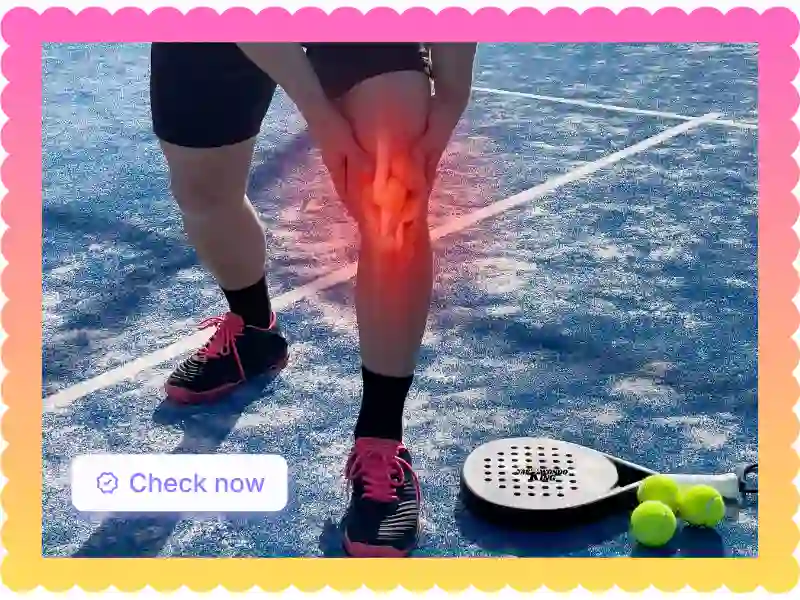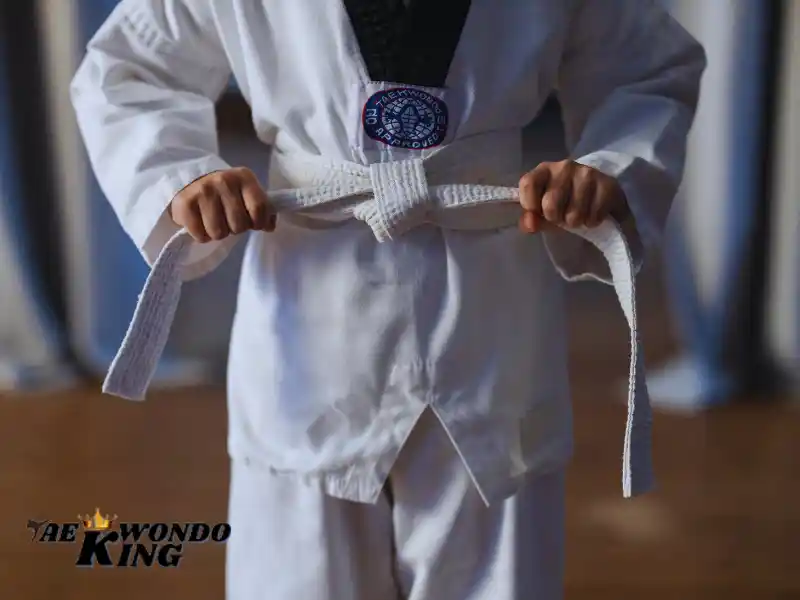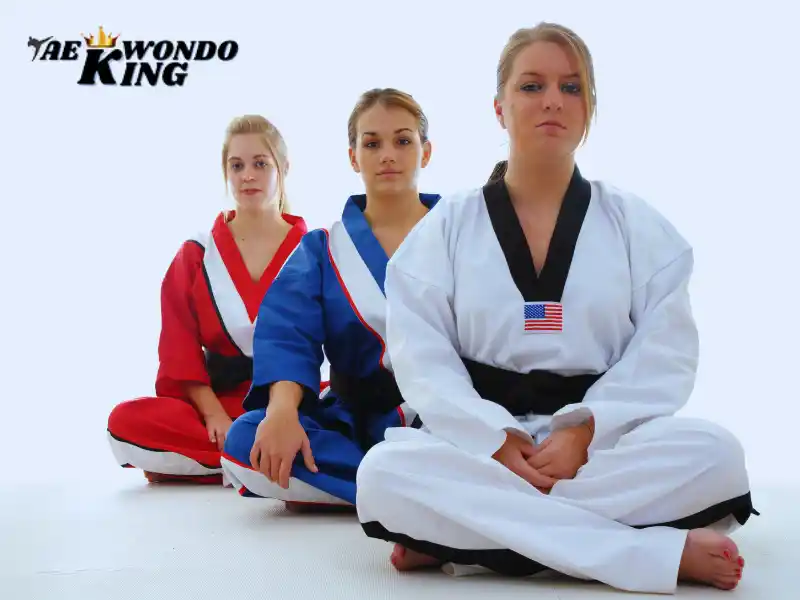
Training for taekwondo feels like dancing on a tightrope, thrilling, but one misstep can lead to a fall. As someone who loves the rush of high kicks but fears the sting of injuries, I was excited to try the Smart Injury Risk Checker from Taekwondo King. This tool promised to guide me toward safer training, and it delivered in ways I didn’t expect.
Here’s my honest take on why this Smart Injury Risk Checker stands out, how it compares to other tools, and a few areas where it could kick higher, shared like a heart-to-heart with a sparring partner.
See the latest Top-Rated New Balance 480 Price Today Used by Champions Runners.

A Tool That Feels Like a Coach
The Taekwondo King Smart Injury Risk Checker is as simple as a warm-up stretch. I visited taekwondoking.com, answered a few questions about my physical condition, like my fitness level, training frequency, and past injuries, and my habits, like warm-up routines. In moments, it gave me a personalized report on my injury risk, with tips to train smarter. It felt like a coach spotting my weak points and nudging me to fix them.
What makes it special is its connection to Taekwondo King’s heart. Led by Ehatasamul Alom, a 3rd Dan taekwondo black belt, the brand is all about empowering athletes with practical tools, from the Gym Progress Tracker to the Hydration Calculator. Their site radiates a passion for martial arts and wellness, making the Injury Risk Checker feel like part of a bigger mission to keep us safe and strong.
Why It Packs a Punch
This Smart Injury Risk Checker shines for a few reasons. First, it’s tailored. Unlike generic advice from sites like WebMD, which can feel like a one-size-fits-all bandage, this tool uses my answers to highlight specific risks, like my tendency to skip cool-downs, which could strain my knees during kicks. It also offers actionable tips, like adding ankle stretches to prevent sprains, which are common in taekwondo. Studies show lower limb injuries, like ankle sprains, make up nearly half of taekwondo injuries, so this focus feels spot-on.
It’s also free and web-based, a big win over apps like InjuryMap, which charge for full access or cluttered with ads. I used it on my phone before class, no downloads needed. The ability to save reports with a User ID is handy, I could revisit my advice later, like checking a playbook before a match. Compared to Physiopedia’s screening guides, which are detailed but dense, this tool is quick and approachable, perfect for busy athletes.
Taekwondo King’s martial arts roots add trust. Their advice aligns with World Taekwondo safety guidelines, like emphasizing warm-ups and protective gear to cut injury risk. It’s like getting tips from a seasoned black belt who’s been bruised and learned the hard way.
See the latest Top-Rated Adjustable Dumbbells Set Price Today Used by Champion.

A Personal Block Against Injury
Let me share a story. Last year, I twisted my ankle during a sparring session, sidelining me for weeks. I blamed bad luck, but when I used the Injury Risk Checker, it flagged my short warm-ups and weak core as risks for lower limb injuries. I started doing the suggested hip stretches and core exercises, like planks, before training. Months later, my kicks feel steadier, and I haven’t had another sprain. It’s like the tool handed me a shield to block injuries before they hit.
Where It Could Kick Harder
To keep it real, the Injury Risk Checker has room to grow. It’s great for general advice but doesn’t dive into specifics like technique flaws, which can cause injuries in taekwondo. For example, improper kicking form can strain knees, but the tool didn’t ask about my technique. Apps like CoachNow analyze movement via video, which could be a cool addition here.
It also doesn’t connect with wearables like Fitbit, which track heart rate or strain. For tech-savvy users, this might feel basic compared to tools like Strava, which integrate data for deeper insights. Finally, the tips are solid but could include more visuals, like stretch diagrams, to make them easier to follow. These are small gaps, though, and don’t diminish its value for most users.
How It Stands in the Ring
Compared to others, Taekwondo King’s Smart Injury Risk Checker holds its ground. Physiopedia’s screening tools are thorough but aimed at pros, not casual athletes. InjuryMap offers rehab plans but locks key features behind a paywall. Free tools from sites like Healthline give broad tips but lack personalization. This checker balances ease, specificity, and cost, free, making it a strong pick for martial artists or anyone active.
Taekwondo King’s brand gives it an edge. Their tools, from dojo finders to calorie calculators, show a commitment to practical wellness, not just profit. Unlike corporate apps, this feels like a labor of love from a martial artist who gets the grind of training.
Who’s It For?
This Smart Injury Risk Checker is ideal for taekwondo players, gym-goers, or anyone active who wants to train safely. It’s perfect for beginners learning to avoid rookie mistakes or intermediates like me, aiming to stay injury-free. If you need detailed movement analysis or wearable integration, you might pair it with apps like CoachNow or Strava. But for quick, free guidance, it’s a champ.
Final Thoughts
The Taekwondo King Smart Injury Risk Checker is like a sparring partner who watches your back, simple, smart, and steady. It’s not perfect, missing technique checks or fancy tech, but it helped me dodge injuries and train with confidence. Taekwondo King’s passion for martial arts makes this tool feel like a trusted ally in the dojang.
Ready to stay safe? Check out taekwondoking.com and give it a try. It’s a small step to keep your training strong and injury-free.
See the latest Top-Rated New Balance 480 Price Today Used by Champions Runners.

FAQs
The risk of injury is the likelihood of experiencing death, personal injury, or frequent and serious illness due to a particular activity or condition.
Injury risk is often measured by analyzing various factors, including individual biomechanics, movement patterns, and past injury history. Specialized assessments might use motion capture technology, force plates, or functional movement screens to provide a quantitative risk score.
Injury factors can be categorized as internal (e.g., age, physical fitness, previous injuries, body composition) and external (e.g., environment, equipment, training load, and technique).
While the term “major injuries” can be subjective, five common and often significant injuries are sprains and strains, fractures, dislocations, concussions, and tendinitis.
Six common risk factors for injury include: poor physical fitness, muscle imbalances, inadequate warm-up, improper technique, fatigue, and previous injuries.
The injury severity rate is typically a workplace safety metric calculated by dividing the total number of days lost due to injury by the total number of hours worked, then multiplying by a standardized number like 200,000 to represent a baseline of 100 employees.
Ten risk factors for injury include: previous injury, fatigue, muscle imbalance, age, gender, poor physical fitness, inadequate warm-up, improper technique, training volume/load, and environmental hazards.
While there isn’t a single universal list, ten common ergonomic risk factors often include: repetition, awkward postures, high force, contact stress, vibration, static loading, extreme temperatures, poor lighting, poor lifting technique, and extended duration of a task.
The “ABCS of risk for injury assessment” is a mnemonic often used in a medical or nursing context, standing for Age, Bone, Coagulation/anticoagulation, and Surgery. This is a framework to quickly identify patients with a higher risk of falls and related injuries.
Five factors that increase the risk of injury are:
Previous injury: A prior injury can make you more susceptible to re-injury.
Fatigue: Tired muscles and a lack of focus can lead to poor form and accidents.
Muscle imbalance: Disproportionate strength in opposing muscle groups can cause strain.
Improper technique: Using incorrect form during exercise or activity places stress on the body.
Inadequate warm-up: Not preparing the body for activity can lead to muscle pulls and strains.
See the latest Top-Rated Adjustable Dumbbells Set Price Today Used by Champion.


Founder, Owner, and CEO of TaekwondoKing.
He is one of the top 100 martial artists in the World and among the top 20 referees in Bangladesh.
Ehatasamul Alom is an esteemed Kukkiwon Certified Taekwondo 3rd Dan Black Belt with over 15 years of experience in this dynamic martial art. Born in Rajshahi, Bangladesh, Ehatasamul’s journey with Taekwondo began at the tender age of seven. His passion led him to compete at national and international levels, where he has bagged numerous awards and honors. He is also a member of the Taekwondo National Referee Panel.
With a Bachelor’s degree in Sports Science from the prestigious Rajshahi University, Ehatasamul has a deep understanding of the technical and scientific aspects of martial arts and some other martial arts.
In 2022, Ehatasamul created the “TaekwondoKing.com” to share his knowledge, Free Resources, Values, and Real experiences. His articles focus on Taekwondo training techniques, competition strategies, Sport Products Reviews, and the art’s rich history and philosophy. He also writes about the importance of mental fortitude and discipline, key aspects of his teaching philosophy. He has already launched many sports, Taekwondo, and health-related Free online tools. His goal is to inspire both beginners and seasoned practitioners worldwide through insightful and engaging content.
If you need any help, contact Ehatasamul Alom at any time.




